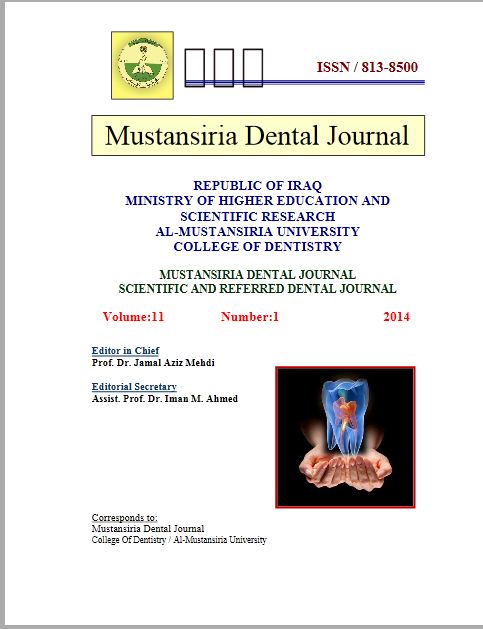Elevation Salivary C - Reactive Protein (CRP) Levels in Iraqi Women with Polycystic ovary syndrome (PCOS ) and Oral diseases
DOI:
https://doi.org/10.32828/mdj.v11i1.175Keywords:
Keywords: CRP, plaque, gingivitis, polycystic ovary syndrome, serum reactive protein.Abstract
Background: Polycystic ovary syndrome (PCOS) is the most common
endocraniopathy in women of reproductive age, affecting (5-10) % of population
and it is the leading cause of female infertility.
C-reactive protein CRP, is a member of a group of acute phase of protein which
increase their concentrations during certain inflammation disorders and used as a
biomarker of inflammation in the body.
Aim of the study: is to assess the salivary level of CRP with were oral disease was
stimulated by evaluate gingival inflammation, plaque accumulation in some Iraqi
women with PCOS disease in compared with women not have PCOS.
Methods: 19 females with PCOS and 26 females with systemically healthy include in
this study. Saliva were collected and CRP were examined and evaluated by using
ELISA method in both study and control group. For all groups we examine the
oral inflammation was measured depending on gingival and plaque index.
Results: the results reported all PCOS women have significant increase in the salivary
CRP than women with no PCOS) mean ± SD (226.8±34SD, 173.8±22.5
respectively). All women with PCOS had significantly increased in gingivitis than
with no PCOS women.
Conclusion:
An increase in salivary CRP and gingival inflammation were found in women
with PCOS. Also suggested measurement of salivary CRP may be helpful in
predicting women with oral disease in PCOS women.

Downloads
Published
Issue
Section
License
The Journal of Mustansiria Dental Journal is an open-access journal that all contents are free of charge. Articles of this journal are licensed under the terms of the Creative Commons Attribution International Public License CC-BY 4.0 (https://creativecommons.org/licenses/by/4.0/legalcode) that licensees are unrestrictly allowed to search, download, share, distribute, print, or link to the full texts of the articles, crawl them for indexing and reproduce any medium of the articles provided that they give the author(s) proper credits (citation). The journal allows the author(s) to retain the copyright of their published article.
Creative Commons-Attribution (BY)








